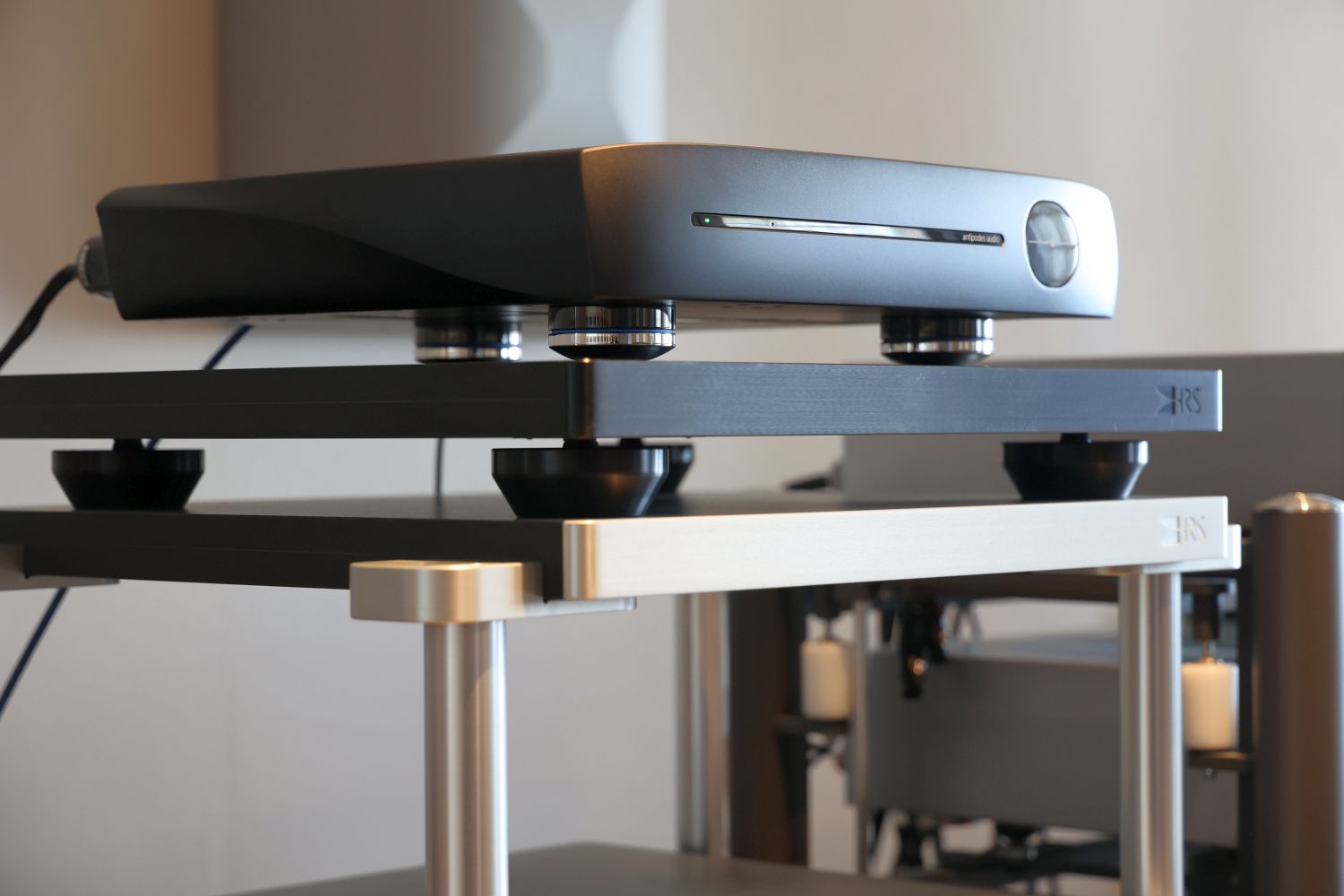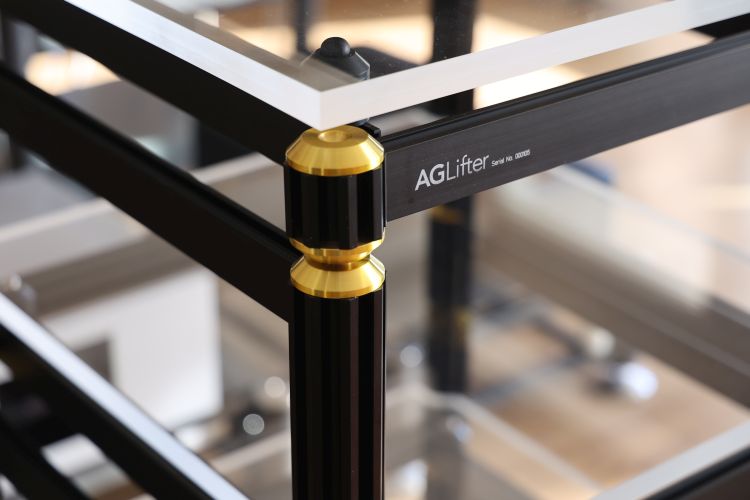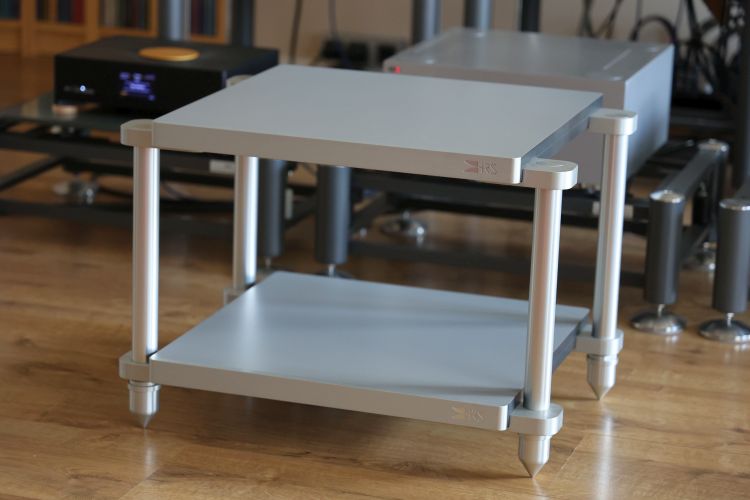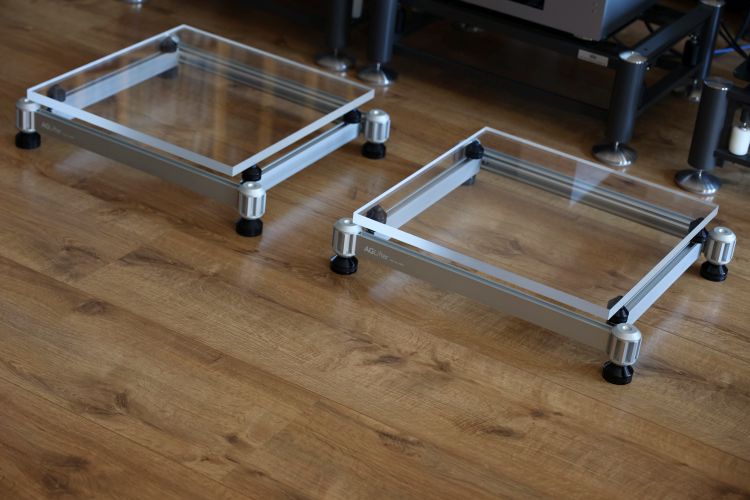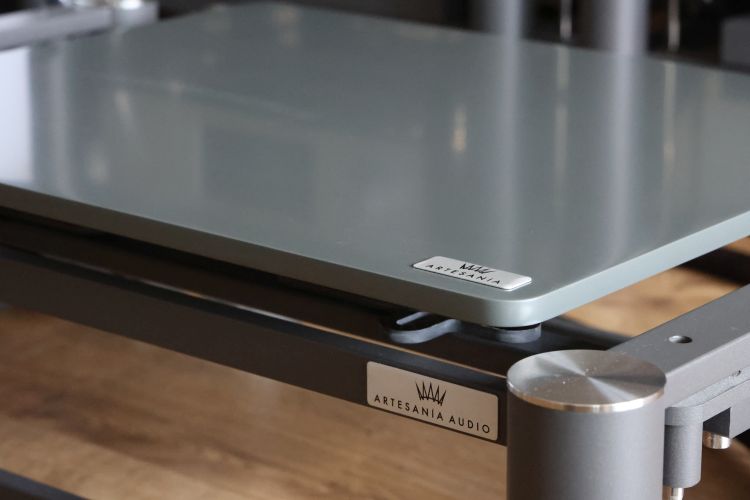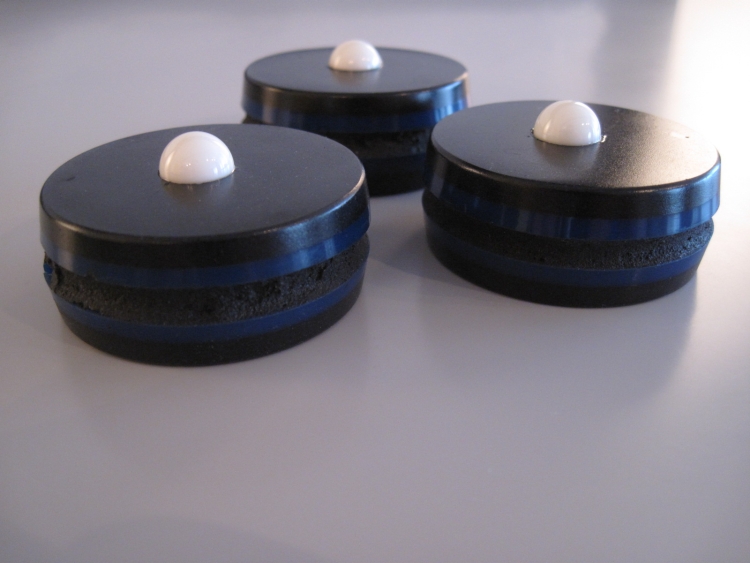
Affordable yet highly effective footers
The Mad Scientist is on fire! One new product after another is released. The latest products are footers made in a variety of materials, and just like the past products were all unique in execution, these footers also are quite non-conformistic, and all the more interesting for it.
Review samples kindly supplied by Mad Scientist Audio
Retail prices:
BlackPods $139 for a set of 3 (or $170 for set of 4)
BlackPods Ceramic $179 for a set of 3 (or $229 for set of 4)
BlackPods Ceramic Mini TBA
Rebate if buying multiples. Free blackdiscus sample. 30 day money back guarantee.
Background
I have used many different footers, and all of them seem to fall in one of two camps: hard coupling devices like cones and spikes, and soft coupling rubbery devices of all sorts. Some people combine soft and hard coupling in an attempt to combine the best of both worlds, but in my experience this usually leads to something more like the worst of both worlds. As the Mad Scientist states, “combining a spike/cone device with damping does not solve anything, and just gives you both problems”. I agree with him for the largest part, with the exception of Finite Elemente Ceraballs, which according to the manufacturer do combine both methods, but not by stacking them on top of each other, rather by hard vertical coupling and compliant damping horizontally. However, I’m not so sure that the Ceraballs sound as good as they do because of the rubber damping, it seems more like an addition that prevents the cap from falling off and doesn’t hurt the sound in the process.
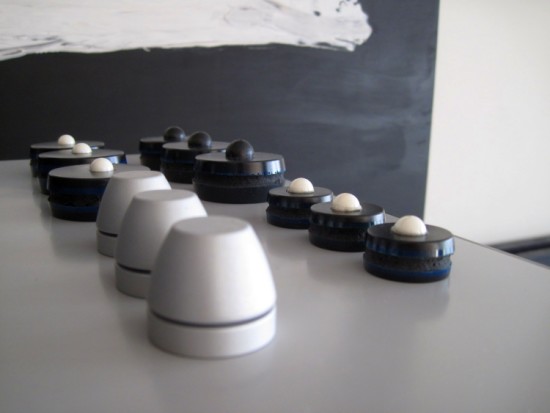
What I like about Mad Scientist products is that a plethora of materials are tried, and the ones that work best are used. This is time consuming, but I think it is the best way to go about the black art that is audio tweaking.
According to the Mad Scientist, BlackPods take a different approach; firstly they provide a secure path to ground in the vertical direction, so that vibrations generated or picked up by the component are chanelled to earth. The structure has been designed to be as non-resonant as possible, using lossy composites and lead. BlackPods also use Constrained Layer Damping to attack vibrations that occur in the horizontal direction, using a lossy elastomer that converts movement to heat.
Sounds good I guess, but what does this mean in practice?
Listening – Regular BlackPods
Unorthodox these footers are, and so is their influence on the sound. Unlike spikes, Ceraballs or Stillpoints, the BlackPods don’t tilt the frequency balance to the treble, thinning the bass in the process, but they provide a strong, solid bass instead. Layered on top of that is a sonorous, full midrange without any peakyness, and finally treble is well integrated and although I like that it is not accentuated, it also seems to be a smidgeon darker than when not using any footers at all. In case of the Meridian 506.24 CD player that I used for testing, this means using the small rubber blobs that pass for its feet. The Meridian’s feet being rubber this also means that compared to using BlackPods, without them the sound slows down and lacks some attack. The BlackPods however do more than merely adjusting the tonal balance: they also widen the soundstage and give a more majestic feeling to the music. In more eartly terms the sound is less dry with them in place.
Most music sounded better with the BlackPods than without them, and I like how for once a set of footers doesn’t accentuate treble, but on balance I find that Finite Elemente Ceraballs do a more balanced job. The BlackPods sound more interesting and colourful, but are somewhat uneven in their presentation and with some music the more integrated Ceraballs made for a better sense of PRAT. Do keep in mind though that these Universal Ceraballs cost 3 times what the BlackPods cost.
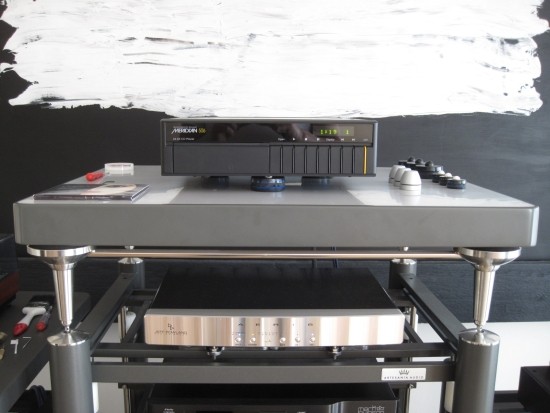
Listening – Ceramic BlackPods (3x Alumina ball)
The Ceramic Blackpods share some characteristics with the regular BlackPods yet don’t quite sound the same. The regular BlackPods were a little dark, and the Ceramic ones improve on this by sounding more open and articulate. Importantly they still sound full, smooth and rich, and don’t tip over into edgy treble or shouty midrange. This is an attribute that I hear in all Mad Scientist products: the unforced musicality. Like the regular BlackPods, the Ceramic ones provide a strong foundation in the bass, along with almost as meaty midrange, but this time with more articulation and enhanced transparency, and also better focus. Treble, as indicated, is more open but still well integrated and definitely still friendly.
PRAT with the Ceramic BlackPods is better than with the regular ones. Again comparing with the Ceraballs, the latter still sound leaner but also more transparent, with slightly airier treble. The Ceraballs, because they’re so devoid of colour, depending on the application, they can also sound a little more boring though, and they also weren’t better on all tracks I played.
I also used to own a set of mini StillPoints, but sold the off. Not that they were bad: on the contrary, they had very large effect, but for me their effect was too strong, and like most if not all hard pointy coupling, the StillPoints sounded too lean in the bass. I have often compared them to the Universal Ceraballs and the latter sound a lot fuller. The BlackPods in turn sound a lot fuller than the Ceraballs, so that gives you an idea of where the StillPoints stand.
Listening – Ceramic BlackPods Mini
This was interesting: although the minis are essentially the same product as the normal sized BlackPods Ceramic, with same size ball but smaller base, they have quite a different presentation. While bass was still fuller than with the Ceraballs, the overall sound was now more transparent and even, but also more compact and less colourful. I have swapped a few times but can’t really make up my mind as to where to place them in relation to the regular size Ceramic BlackPods. On the one hand they sound more like the Ceraballs and even hint more at StillPoints in terms of resolution, openness and treble air, but they also sound less rich and layered than the normal sized versions, and have less of that undefinable magic which the normal sized versions portray so effortlessly.
Update 21-3-2015 – Zirconia
After I started carrying out the review above, Bob told me that he was working on perfecting the Ceramic Footers, by exchanging one Alumina footer with a Zirconia version. I received a separate Zirconia footer some time later, and this is why I added this addendum to the review.
The foot itself is the same, but the ball on top is of different, harder material by the name of Zirconia. Having both 3 normal Alumina feet as well as one Zirconia version made for easy comparisons. Although the balls are of a slightly different tone of white, the distinction is made clearer by means of a sticker labelled “Z”, for the Zirconia footer.
Again using the Meridian 506.24 CD player on top of the Artesania Krion platform, I listened to a few tracks, while swapping the front footer between Alumina and Zirconia, and sure enough there is a pretty distinct difference. The harder Zirconia material does indeed sound tighter as expected, but what wasn’t expected is that the treble remains fluid and supple. The effect us subtle but distinct at the same time: bass is better controlled, midrange is clearer and PRAT is further improved, without adding harshness or anything like that. While none of these improvements change the core character of the footers, when going back to the all-Alumina set, I found the sound to be less interesting and less involving. So there you have it: the latest version with 2x Alumina and 1x Zirconia dots all the right i’s, and this combination comes highly recommended.
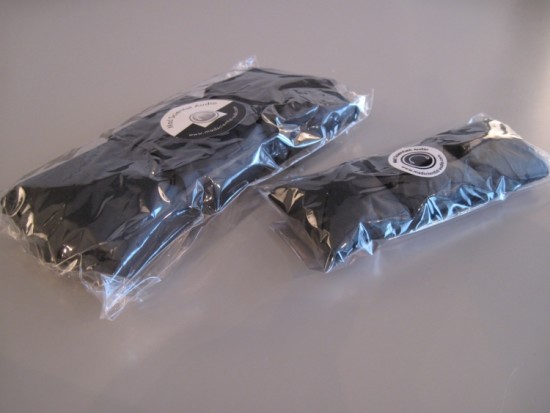
Conclusion
Most music sounds better with the all Alumina Ceramic BlackPods than without them, and I like how for once a set of footers doesn’t accentuate treble like most other footers do, instead providing a strong, solid bass with a sonorous, full and rich midrange without any peakyness and well integrated treble. BlackPods also widen the soundstage and give a more majestic feeling to the music. In more earthly terms the sound is less dry with them in place.
On balance I find that Finite Elemente Universal Ceraballs sound more transparent and even, but also thinner and less colourful, and definitely less smoothly rich. The BlackPods sound more interesting and colourful, but are somewhat uneven in their presentation and with some music the more integrated Ceraballs made for a better sense of PRAT. Do keep in mind though that these Universal Ceraballs cost 3 times what the BlackPods cost.
The latest Zirconia addition brings the BlackPods closer to the sound of the Ceraballs in terms of resolution and articulation, but interestingly the BlackPods retain their sonorous and rich sound, and at this stage I’m not so sure anymore which product I prefer, which I think speaks volumes for the development skills of the Mad Scientist.
Please note that as with any tweak, your mileage may vary. The results described above were yielded using one specific CD player placed on an Artesania Krion turntable platform, which has its own sound characteristics. The important part is that the BlackPods do provide an alternate approach to what was previously available and offer a sonic presentation that I have not yet heard in other products.
In the end, footers are like spices in your kitchen, or like cables I guess… you never can have enough of them! I have a drawer full of cables, and several boxes with footers and other tweaks. It’s just nice to have some variants to play with as my system, my mood, or the weather changes, and these BlackPod variants are affordable enough to just give them a try. I say if in doubt, just get all of them!
External Links
Manufacturer: Madscientist

